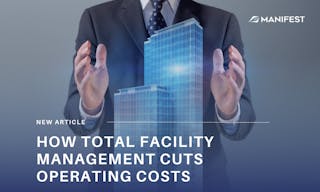
How Total Facility Management cuts operating costs
Total Facility Management is a simple yet powerful model: a single provider takes over all building support functions, from cleaning and technical maintenance to Security Services, energy management, and visitor support. Instead of multiple vendors and scattered contracts, you have one agreement, one helpdesk, one Single Point of Contact, and common SLAs with KPIs that measure quality. This reduces friction, simplifies decision-making, and ensures measurable performance.

In daily operations, this translates into better organization and less chaos. Teams and technicians work under a unified weekly plan, requests are logged in a central system, and tasks are closed with proof of completion. The workflow becomes clear, delays are minimized, and spaces remain available when needed. It is the difference between fragmented outsourcing and orchestrated Facility Management and Facilities Management.
Cost savings come from three main sources. First, consolidated procurement, since a bigger basket means better terms and discounts. Second, preventive maintenance that reduces emergencies and unplanned replacements. Third, improved Energy Efficiency through practical actions like lighting schedules, optimized HVAC settings, occupancy sensors, and consumption monitoring. As a result, the building operates smoothly, consumes less energy, and maintains comfort.
Total Facility Management also simplifies governance. SLAs and KPIs become specific and measurable: response times, resolution times, cleanliness levels, preventive maintenance rates, and safety indicators. A monthly dashboard gives management a clear view of what is performing well and what needs improvement. For networks with multiple sites such as offices, logistics, or retail, this transparency is vital, as it creates a common language across all stakeholders.
Workspace quality is not a minor detail. Clean and orderly environments, consistent thermal comfort, rapid issue resolution, and visible Security Services enhance the experience of employees and visitors. At the same time, operational risk decreases, as one provider is fully accountable for processes, traceability, and compliance with standards. Facility Management and Facilities Management shift from being cost centers to becoming value drivers.
The same logic supports sustainability goals. The team executing the services collects data, suggests quick-win interventions, and drives simple behavioral changes. Energy Efficiency is not just an annual report but a weekly habit. This aligns with ESG requirements and increases the long-term value of the property.
In conclusion, Total Facility Management creates a single accountable hub, integrates all services into Integrated Facility Services, and delivers visible cost savings with consistent service levels. Fewer emergency calls, more predictable budgets, and a better overall building experience.